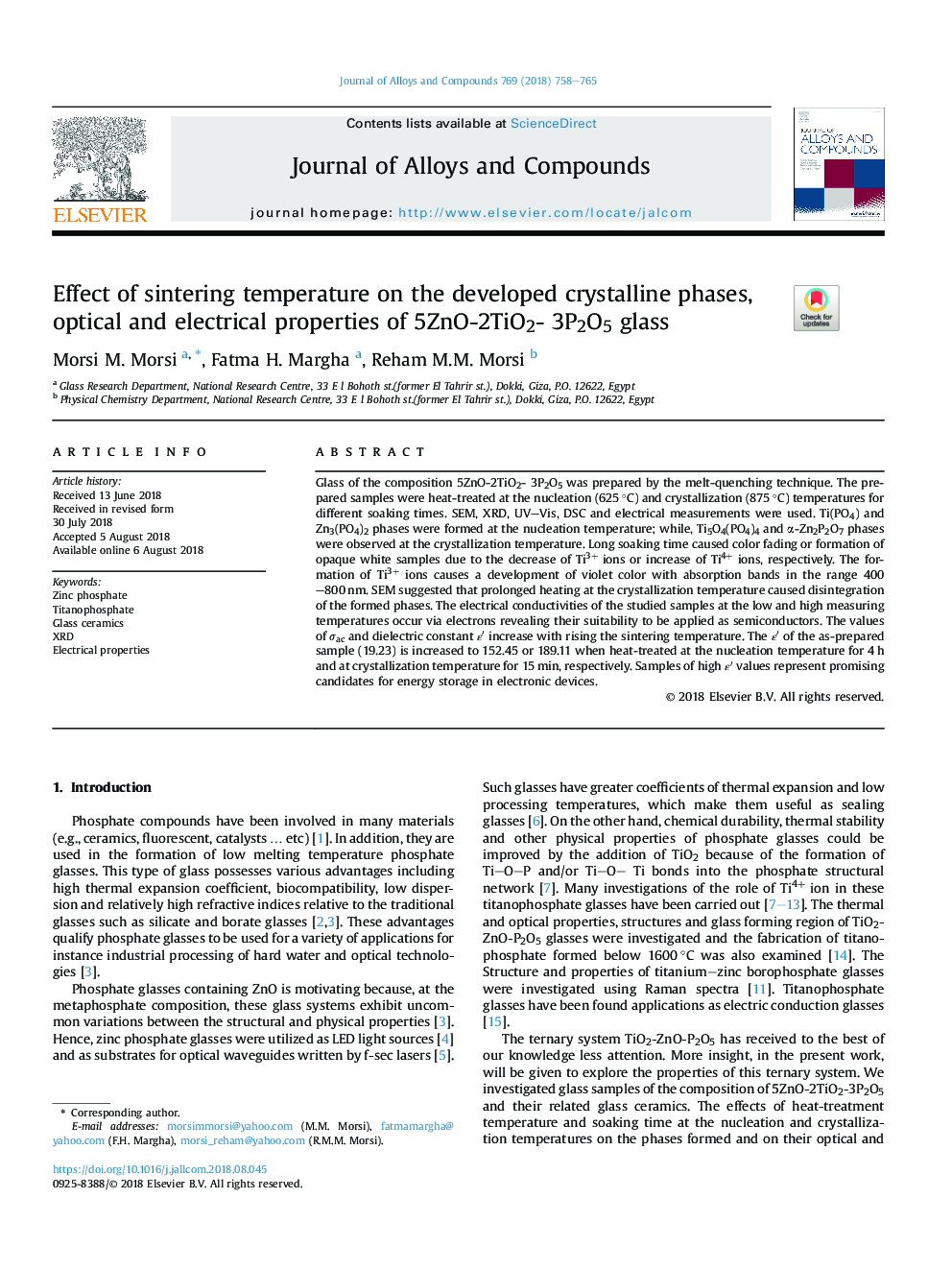| Article ID | Journal | Published Year | Pages | File Type |
|---|---|---|---|---|
| 7990069 | Journal of Alloys and Compounds | 2018 | 8 Pages |
Abstract
Glass of the composition 5ZnO-2TiO2- 3P2O5 was prepared by the melt-quenching technique. The prepared samples were heat-treated at the nucleation (625â¯Â°C) and crystallization (875â¯Â°C) temperatures for different soaking times. SEM, XRD, UV-Vis, DSC and electrical measurements were used. Ti(PO4) and Zn3(PO4)2 phases were formed at the nucleation temperature; while, Ti5O4(PO4)4 and α-Zn2P2O7 phases were observed at the crystallization temperature. Long soaking time caused color fading or formation of opaque white samples due to the decrease of Ti3+ ions or increase of Ti4+ ions, respectively. The formation of Ti3+ ions causes a development of violet color with absorption bands in the range 400-800â¯nm. SEM suggested that prolonged heating at the crystallization temperature caused disintegration of the formed phases. The electrical conductivities of the studied samples at the low and high measuring temperatures occur via electrons revealing their suitability to be applied as semiconductors. The values of Ïac and dielectric constant εⲠincrease with rising the sintering temperature. The εⲠof the as-prepared sample (19.23) is increased to 152.45 or 189.11 when heat-treated at the nucleation temperature for 4â¯h and at crystallization temperature for 15â¯min, respectively. Samples of high εⲠvalues represent promising candidates for energy storage in electronic devices.
Related Topics
Physical Sciences and Engineering
Materials Science
Metals and Alloys
Authors
Morsi M. Morsi, Fatma H. Margha, Reham M.M. Morsi,
